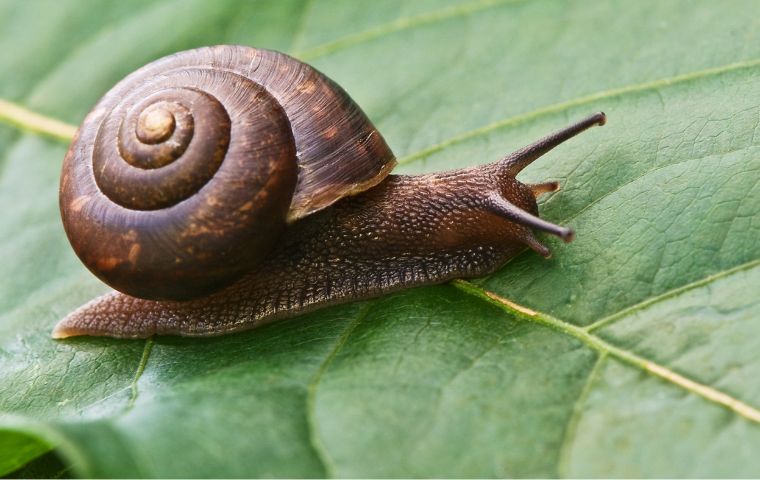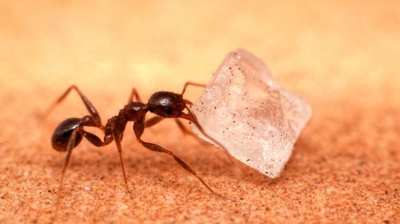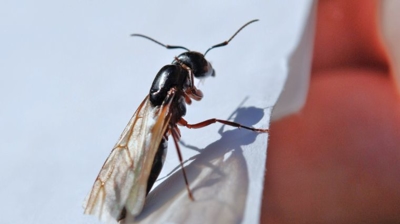
Garden Snails
What Are Garden Snails?
Garden snails, scientifically known as Cornu aspersum (formerly Helix aspersa), are a species of land snail commonly found in gardens, fields, and agricultural areas around the world. They are part of the class Gastropoda, which includes snails and slugs, and are known for their coiled shells and slimy, mucus-covered bodies.
Their movement is facilitated by a layer of mucus that helps reduce friction, allowing them to glide along surfaces. Snails also use this mucus to protect their soft bodies from rough surfaces and desiccation. They are generally slow-moving creatures and are nocturnal, being more active during the cooler and more humid night hours.
Are Garden Snails Harmful?
Garden snails can be considered harmful in a few ways, particularly when they invade cultivated areas such as gardens, farms, and orchards. Here are the main ways garden snails can cause harm:
- Damage to Crops and Plants: Garden snails are herbivores that feed on a wide variety of plants, including vegetables, fruits, flowers, and ornamental plants. They are particularly problematic for new growth, as they tend to consume tender leaves, young seedlings, and plant stems. This feeding behavior can stunt plant growth, damage the aesthetics of gardens, and result in significant crop losses in agricultural settings. Snails may also feed on ripening fruits and vegetables, leaving behind unsightly holes and marks that make produce less marketable.
- Transmission of Disease and Parasites: While snails themselves are not directly harmful to human health in most cases, they can be carriers of parasites. The most notable example is Angiostrongylus cantonensis, the rat lungworm parasite, which is sometimes found in snails. If humans inadvertently consume infected snails (through contaminated produce or improper handling), the parasite can cause a disease known as eosinophilic meningoencephalitis, which affects the brain and spinal cord. Though cases are rare, it is still a concern in areas where snails are common. Additionally, snails can harbor bacteria, such as Salmonella or E. coli, that could contaminate food or surfaces they come into contact with.
- Soil Degradation: Large populations of snails can lead to soil damage, particularly if they feed on plant roots and underground structures. The destruction of plant roots can weaken the soil structure, making it more prone to erosion. This, in turn, can reduce soil fertility over time, making it harder for other plants to thrive in the affected areas.
- Slime Trails: While slime trails are a natural part of the snail’s movement, they can cause problems in certain environments. These mucus trails can create slippery surfaces, potentially leading to slips and falls. Additionally, the slime can contaminate surfaces, including food, and if left uncleaned, may create a sticky residue that attracts dirt and bacteria.
While garden snails can serve ecological roles, such as decomposing organic material and providing food for certain predators, their negative effects, especially in managed gardens and agricultural fields, often outweigh the benefits. Snail control methods like hand-picking, traps, and natural predators can help manage their populations, but snails can be particularly persistent once they establish themselves in an area.
Garden Snail Appearance
Garden snails have a distinct and recognizable appearance, with several key features:
- Shell: The most notable feature of a garden snail is its spiral-shaped shell, which provides protection for its soft body. The shell is typically light brown or tan, often with darker, irregular brown stripes or markings. The spiral structure is a key characteristic, and the shell’s size can vary, typically ranging from 1 to 4 cm in diameter, though some snails can grow larger. The shell’s surface is smooth, but may have small ridges or lines depending on the age and growth rate of the snail.
- Body: The body of a garden snail is soft and slimy, covered in mucus to help it move across surfaces and protect it from rough terrain and dehydration. The body is usually a pale, translucent gray or light brown color. The front part of the body extends into a foot, which is used for locomotion. The foot is flat and glides along surfaces in a rippling motion.
- Tentacles: Garden snails have two pairs of tentacles on their heads. The upper pair are long and are equipped with eyes at the tips, allowing the snail to detect light and movement. The lower pair are shorter and are used for sensory purposes, helping the snail sense its environment, like taste and smell.
- Mouth: Located underneath the tentacles, the mouth of the garden snail contains a small, specialized organ called a radula, which is used for feeding. The radula has tiny, tooth-like structures that scrape food off surfaces. Garden snails use this structure to feed on leaves, fruits, and other plant material.
- Foot: The foot of the garden snail is wide and flat, stretching across the surface it’s moving on. The mucus the snail secretes helps it move smoothly and protects the foot from being scraped or injured by rough surfaces. The foot’s rippling motion allows the snail to move, albeit slowly.
The garden snail has a characteristic, soft, spiral shell and a mucus-covered body that gives it a slimy, moist appearance.
Garden Snail Habitats
Garden snails are commonly found in a variety of environments, particularly where moisture and vegetation are abundant. Here are the most likely places where you may encounter garden snails:
- Gardens: As their name suggests, garden snails are most often found in gardens, where they feed on plants, flowers, vegetables, and fruits. They are especially prevalent in moist, shaded areas such as under plant leaves, around mulch, or near damp soil.
- Lawns and Green Spaces: Snails are frequently found in grassy areas with plenty of moisture, such as lawns, meadows, or parks. Early morning or evening is the best time to spot them, as they are more active when it is cooler and humidity is higher.
- Vegetable Gardens and Farms: Garden snails are pests in agricultural settings, particularly in areas where tender crops like lettuce, cabbage, and other leafy vegetables are grown. They are attracted to these plants for food, and large populations can cause significant damage to crops.
- Wooded Areas and Forest Floors: Garden snails also thrive in natural environments like woodlands, especially where the forest floor is damp and rich in organic matter. They often seek out the cool, shaded areas beneath fallen leaves, logs, and rocks.
- Moist, Damp Locations: Any area that provides moisture and shelter is a prime habitat for garden snails. This includes places such as flower beds, shaded corners of your yard, under garden pots or stones, and around compost piles where moisture is retained.
- Near Water Sources: Snails are drawn to areas with high humidity, so you might find them near ponds, streams, or other water sources. While they do not live in water, they are often found on the damp, moist ground near these bodies of water, especially in the early morning or after rainfall.
- Urban Environments: Garden snails can also be found in urban environments, particularly in areas with gardens, parks, or green spaces. They are often seen around damp, sheltered spots such as beneath city planters, in public flower beds, or in courtyards.
- Under Sheltered Objects: Snails are often found hiding under objects that provide shelter from the sun and predators, such as rocks, bricks, fallen leaves, and garden furniture. They seek out dark, cool, and moist places during the hotter parts of the day.
Garden snails are most active during the night or on cloudy, rainy days when the conditions are cooler and humid, making it easier for them to move without drying out. So, if you’re trying to spot them, it’s best to look during the evening or after a rainfall.
Garden Snails Diet
Garden snails are herbivores and feed primarily on plant material. Their diet consists of a wide variety of organic matter, and they have a particular preference for soft, tender plants. Here's a closer look at what garden snails eat:
- Leafy Vegetation: Snails are particularly drawn to tender leaves, often consuming the softer parts of plants while leaving the tougher veins behind. They may feed on plants like lettuce, cabbage, and spinach.
- Herbaceous Plants: They also feed on the soft stems and leaves of flowers and other non-woody plants, particularly those with high moisture content.
- Ripe Fruits: Snails are known to feed on fruits, especially those that are overripe or fallen from trees. They enjoy fruits such as strawberries, apples, tomatoes, and melons.
- Vegetables: Garden snails can damage crops in vegetable gardens by feeding on a wide range of vegetables, including leafy greens, beans, peas, carrots, and cucumbers.
- Mushrooms: Snails are also attracted to fungi, including mushrooms, which provide a moist, nutrient-rich food source.
- Mold: In humid environments, garden snails may consume mold and mildew that grows on decaying organic material.
- Decomposing Organic Material: They help in the decomposition process by feeding on dead leaves, plant debris, and other decaying organic material, contributing to the nutrient cycle in ecosystems.
Garden snails typically feed at night or during periods of high humidity, as they prefer cooler, damp conditions. This is when their feeding behavior is most active, and they can cause the most damage to crops, tender plants, and garden vegetation.

Garden Snail Life Cycle
The life cycle of garden snails (species like Cornu aspersum) follows several stages, each of which contributes to their growth, reproduction, and eventual death. Here's a detailed look at their life cycle:
- Egg Laying: Fertilized snails will lay their eggs in moist, sheltered locations, such as under rocks, leaves, or soil. They typically lay around 80 to 100 eggs at a time, although the number can vary.
- Incubation: The eggs are translucent at first but become white and hardened after laying. The incubation period ranges from two to four weeks, depending on temperature and humidity. Cooler, wetter conditions tend to slow the development, while warmth accelerates it.
- Emergence: After the incubation period, the snails hatch from their eggs. The hatchlings are small and fragile, usually measuring around 3 to 5 mm in length at birth. They emerge from the eggs with a soft, transparent shell.
- Initial Development: As soon as they hatch, the snails begin to feed on organic matter like decaying plant material and algae. Their shells grow quickly over the next few weeks, hardening as they gain calcium from their diet.
- Shell Development: In the first few months, snails grow rapidly. The soft, transparent shell begins to solidify and darken, developing a spiral pattern. The snail’s shell is an essential part of its development, as it provides protection and stability.
- Feeding and Growth: During the juvenile stage, snails continue to feed on plant material. Their growth depends largely on the availability of food and environmental conditions. They become more active and are capable of moving farther from their hatching site.
- Sexual Maturity: Snails typically reach sexual maturity after about 1 to 2 years, though this can vary with environmental conditions. Once matured, they are capable of reproducing and starting the life cycle over again.
- Growth Ceases: As snails become adults, they stop growing in size, although their shells may continue to grow incrementally. They usually live for around 2 to 5 years in the wild, but this can vary based on predators, food availability, and environmental conditions.
- Reproduction: Snails mate, lay eggs, and the cycle continues. Most garden snails can reproduce multiple times a year. Garden snails are hermaphrodites, meaning each individual has both male and female reproductive organs. When two snails mate, they exchange sperm, and both can lay eggs. This usually occurs during the warmer months.
- End of Life: The snails’ life span is typically about 2 to 5 years, depending on factors like predation, weather conditions, and availability of food. Once they die, their empty shells may be left behind to decompose, contributing calcium back to the environment.
The entire cycle, from egg to adult snail, generally takes around 1 to 2 years, but environmental conditions can cause variations in growth rate and reproductive cycles.

Hear From Our Happy Customers
-
"Wonderful Service"
Wonderful service. Jarvis is great. Took care of everything I needed. Thank you!
- Henry P. -
"Fantastic & Patient"
Jarvis was fantastic and patient. He answered my questions with an in-depth explanation and addressed all of my areas of concern. Would love for him to be my assigned tech going forward. Well done!
- Yonnette M. -
"Great Communication"
Tech was on time, communication was great, and he accommodated my needs.
- Alonzo W. -
"Very Knowledgeable"
The tech that arrived was courteous, professional, and very knowledgeable. He was Great.
- Uerial I. -
"Professional & Considerate"
I’m pleased with Miche services. Jarvis came today. Professional and considerate. Thank you!
- Judy B. -
"Exceeds Expectations"
I can’t say enough positive things about this company... The tech that came out, Jarvis went above and beyond my expectations. Thank you guys, I will continue using your services.
- Jake M.



